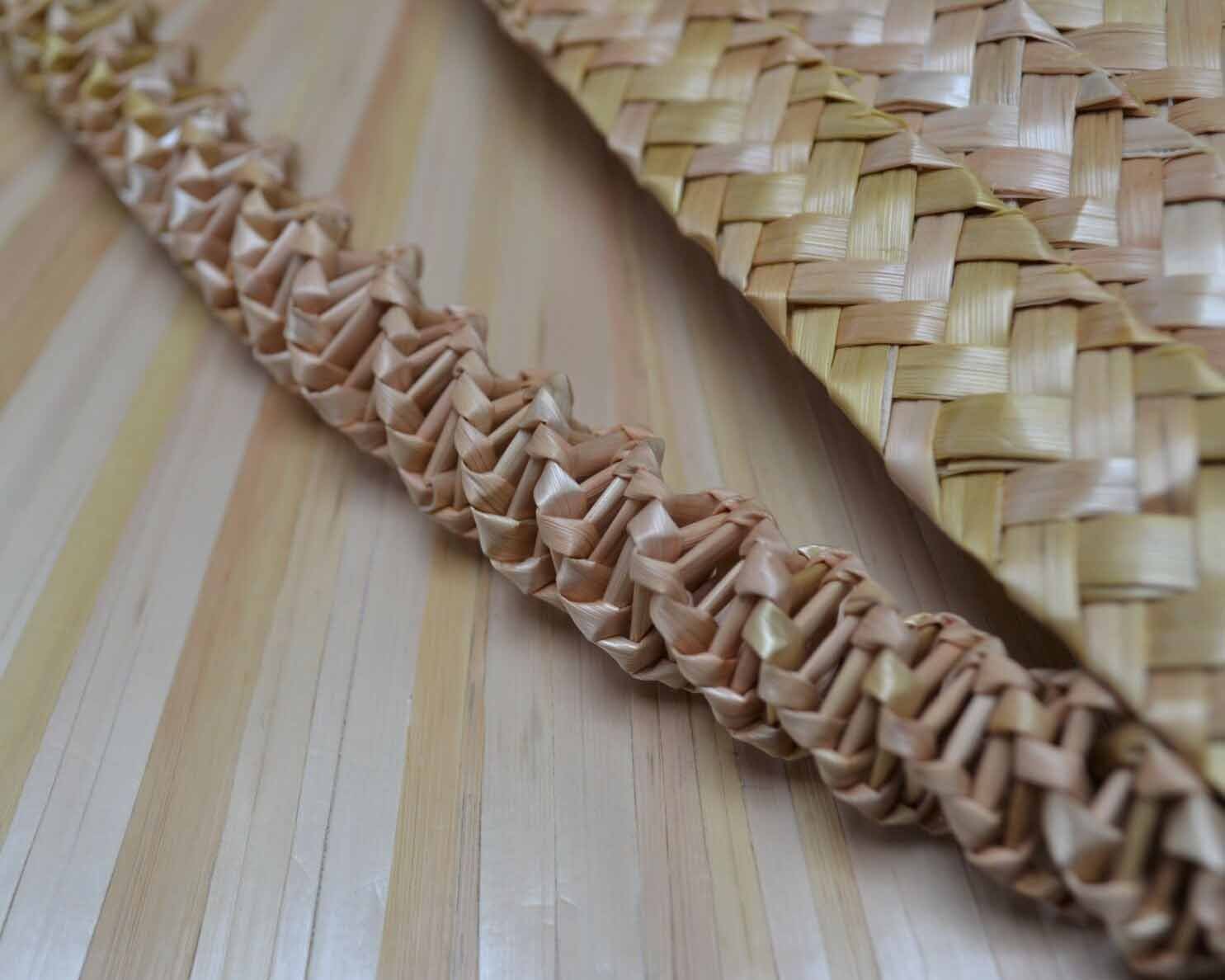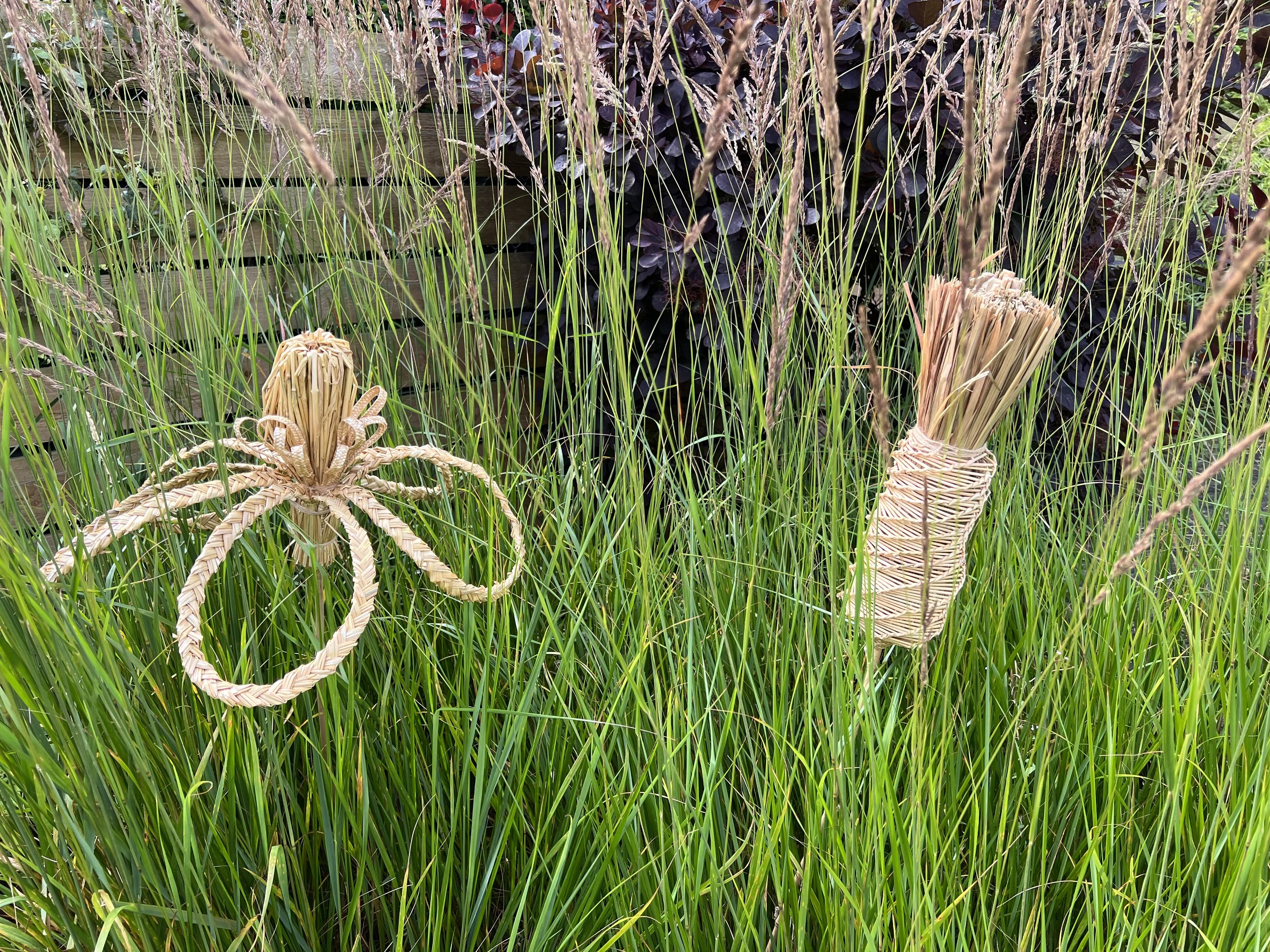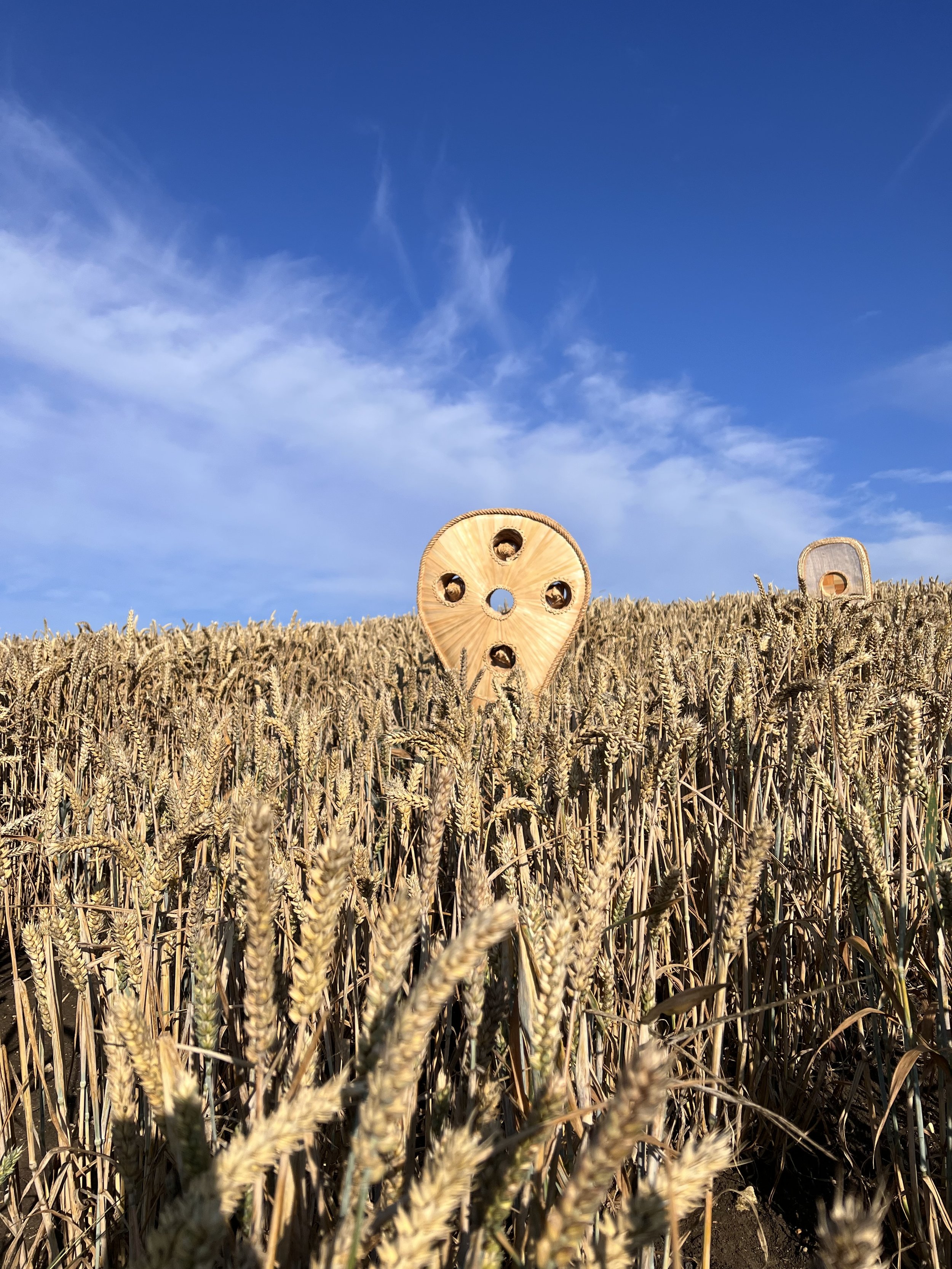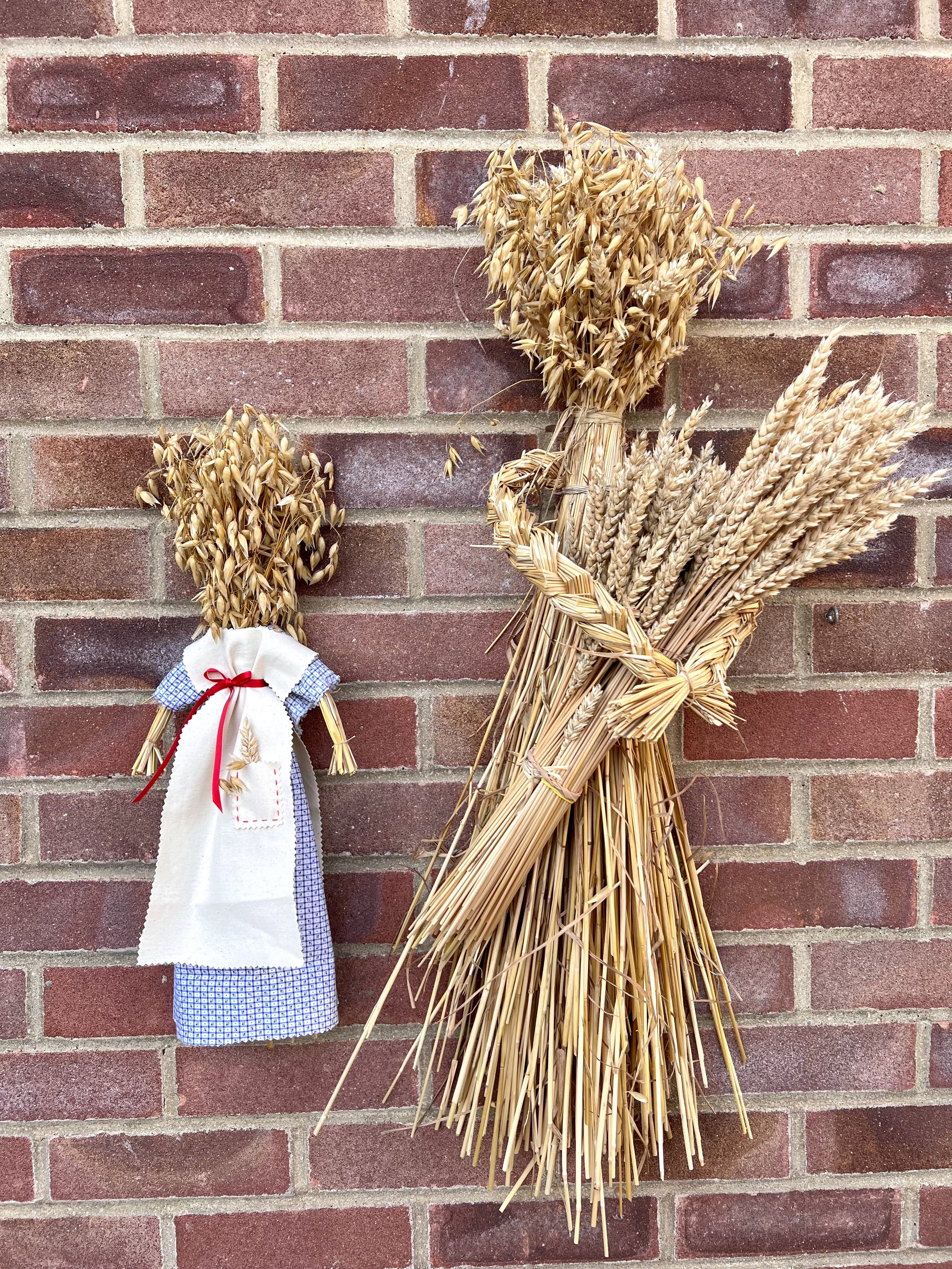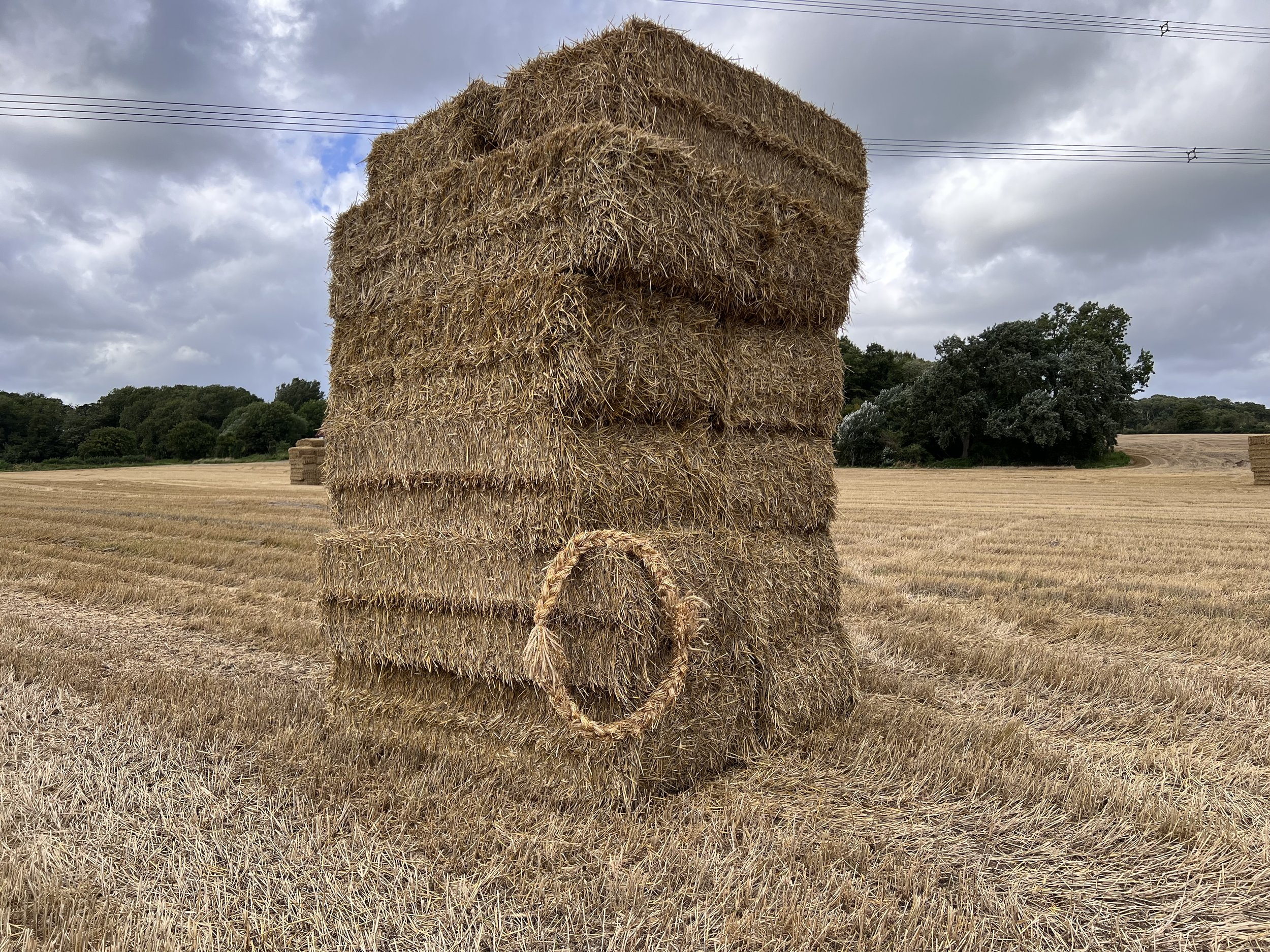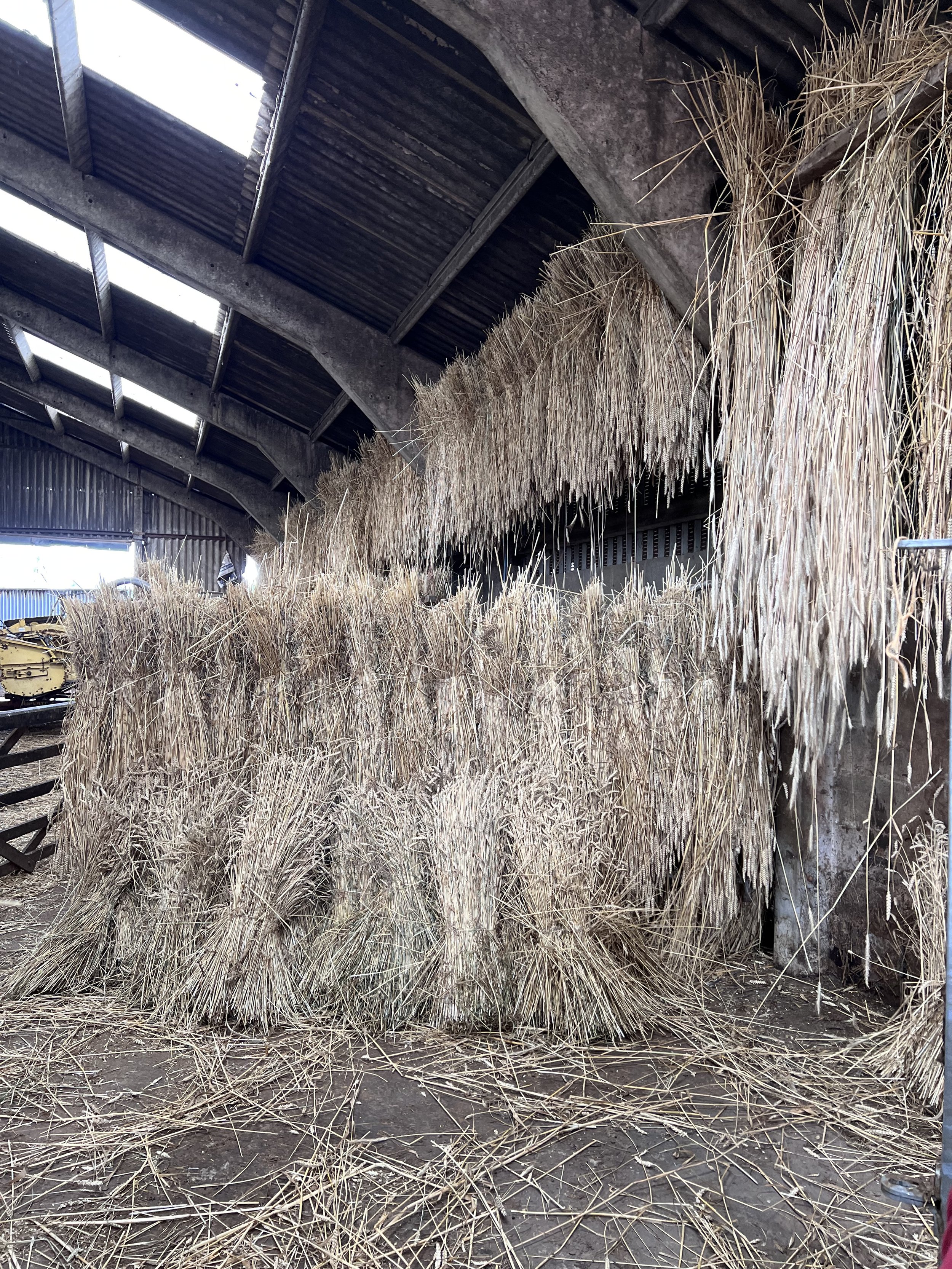Straw.
As part of my continued interest in Heritage Crafts I have developed a new strand to my practice in relation to straw. Please check out my Ministry of Straw website to learn more about my work with straw, workshops, commissions and prop making.
Customs and celebrations surrounding the harvest of crops have been celebrated for centuries across the world and are symbols intended to encourage the fertility of crops, preserve the corn spirit so that it would remain active. Corn Dollies are also referred to as Harvest Trophies and Harvest Tokens. Traditionally they would be plaited and made from the last sheaf of the harvest and often plaited in situ. They would be bought from the field, perhaps included as part of the Harvest Supper celebrations or kept in the farm until the following year. They can take the form of a loose human shape such as a maiden or a plaited trophy. Sometimes these may have been burnt or ploughed back into the land.
‘Corn’ is a term for the family of grains which includes barley, oats, wheat and rye. ‘Corn dolly’ is a wide-ranging term which includes figures, love tokens, crosses, Scandinavian star designs, and Far Eastern shrine dolls made from ‘corn’ straw. Techniques used in the craft include tying, plaiting, weaving and marquetry. The corn dolly was originally an object used in rites and rituals, and in many parts of the world it was believed that the ‘Corn Goddess’ lived in the crop and died when it was harvested. Images of the Goddess, or other talismans, were woven from the last sheaf to be reaped and carefully preserved to ensure an abundant crop the following year. By the twentieth century, corn dollies had lost their ritual associations, and from the 1950s there was a concerted effort to preserve the craft of corn dolly making.


